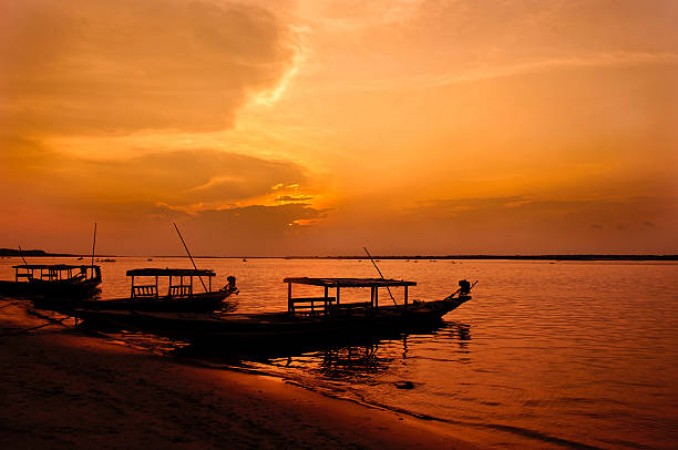
Ramsar sites, designated under the Ramsar Convention, are globally recognized wetlands known for their ecological significance. Odisha, a state in India, boasts several such sites, which have become havens for tourists and nature lovers.
Chilika Lake - Jewel of Odisha Chilika Lake: A Breathtaking Ramsar Site Chilika Lake, the largest coastal lagoon in India, is one of Odisha's most renowned Ramsar sites. Its brackish waters, lush mangroves, and diverse avian population make it a paradise for birdwatchers and nature enthusiasts.
Mangroves of Bhitarkanika Exploring Bhitarkanika's Pristine Mangroves Bhitarkanika, another Ramsar site in Odisha, is famous for its sprawling mangrove forests. This unique ecosystem houses various wildlife species, including the endangered saltwater crocodile.
Wetlands of Ansupa Lake Ansupa Lake: A Serene Getaway Ansupa Lake, nestled amidst the Mahanadi River's lap, is a charming Ramsar site in Odisha. It offers a tranquil escape for visitors seeking solace in nature's lap.
Simlipal: A Biodiversity Hotspot Simlipal National Park: Where Wilderness Thrives Simlipal National Park, a UNESCO Biosphere Reserve and a Ramsar site, is a treasure trove of biodiversity. Explore its dense forests and diverse wildlife.
Deepor Beel: Assam's Ramsar Connection Deepor Beel: A Ramsar Site on Odisha's Borders Although not entirely in Odisha, Deepor Beel in Assam shares its border with the state. This wetland offers a fantastic opportunity to witness diverse bird species and waterfowl.
Keoladeo National Park: A Feathered Paradise Keoladeo National Park: An Avian Wonderland While not in Odisha, Keoladeo National Park in Rajasthan, a UNESCO World Heritage Site and Ramsar site, is easily accessible from the state. It is a birdwatcher's delight.
The Charm of Ramsar Sites Ramsar Sites: A Testament to Conservation These Ramsar sites in Odisha and nearby areas are vital in conserving wetland ecosystems and preserving their rich biodiversity. They also provide excellent recreational opportunities for tourists.
Why Visit Ramsar Sites? Rich Biodiversity Ramsar sites are home to a wide array of plant and animal species. Birdwatchers can spot rare and migratory birds, making these sites a hotspot for avian enthusiasts.
Unique Landscapes The diverse landscapes of these sites, including wetlands, forests, and lagoons, create a visual treat for nature lovers and photographers.
Educational Value Exploring Ramsar sites offers educational experiences for people of all ages. It's an opportunity to learn about wetland conservation and the importance of protecting these ecosystems.
Recreational Activities Tourists can enjoy activities such as boating, wildlife safaris, and picnics in these pristine settings.
Conservation Efforts Preserving Nature's Bounty The Ramsar Convention aims to conserve wetlands globally. Visiting these sites helps raise awareness about their importance and contributes to conservation efforts.
Plan Your Visit Tips for Exploring Ramsar Sites
In Conclusion Ramsar sites in Odisha and neighboring areas offer a unique opportunity to connect with nature. Whether you're a wildlife enthusiast, a birdwatcher, or someone seeking a peaceful retreat, these sites have something special to offer. Explore these wetland wonders and be a part of the global effort to preserve these ecological treasures.
Dedh Ishqiya's Royal Aura: Huma Qureshi's Family Jewelry Takes Center Stage